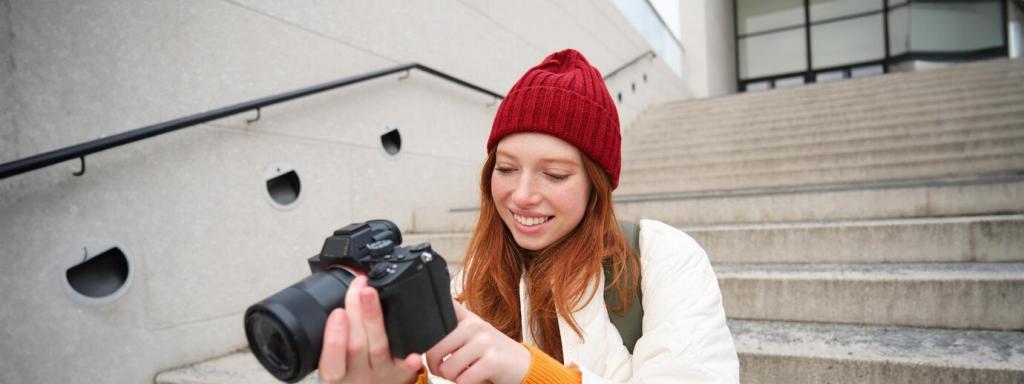How to Frame Books with Smartphone Photography
Understanding the Appeal of Book Photography
The Emotional Impact of Book Images
A well-framed photo of a book goes beyond mere documentation—it captures emotion and ambiance. Images can reflect comfort through a well-worn paperback and a mug of tea, or mystery through a shadowy hardcover with dramatic lighting. When you consider the feeling you want to evoke, your photographs become more than just visual representations; they become invitations for others to connect with reading on a personal level. Allowing emotion to drive your composition ensures your images tell a story as rich as the books themselves.


Books as Visual Storytellers
Every book has its own character that shines through, whether it’s a battered classic or a shiny new release. When you photograph a book, you’re not just capturing an object, but also suggesting its story—a glimpse of a bookmarked page, a hand reaching for a shelf, all add to the narrative. By thoughtfully arranging the book and its surroundings, you turn each photograph into a snapshot of a larger reading journey, encouraging viewers to imagine the story within and perhaps inspiring them to pick up the book themselves.
Mastering Composition and Framing
Choosing the Right Angle and Perspective
The angle you choose can dramatically change how a book is perceived. Photographing from above gives a flat lay that highlights book covers and surrounding items, while a side or front angle can convey depth or focus on the book’s spine. Experimenting with high and low angles adds interest; sometimes an unconventional viewpoint tells the story best. Move around your subject to find a perspective that feels dynamic rather than static, and tap on your phone screen to set the focus exactly where you want it. Don’t be afraid to take multiple shots from different angles to see which feels most compelling.
Arranging Props and Backgrounds
In book photography, context is key. Incorporating props like glasses, candles, or coffee cups can add personality and meaning, transforming a simple book shot into a curated scene. The background plays an equally vital role—choose clean backgrounds for a minimalist look or textured ones like cozy blankets or rustic tables for warmth and depth. Consider color harmony: props and backgrounds should complement, rather than overshadow, your featured book. Take time to arrange each element, making sure nothing distracts from the book’s cover or spine, and keep your frame uncluttered for a professional finish.
Framing to Tell a Story
Every photo is a chance to tell a mini story. Use framing to suggest a narrative—a partially read page, a book open beside a window, or a neat stack awaiting attention. Consider the rule of thirds: placing the book or focal point slightly off-center often creates a more natural and engaging image. Think about lines within the image, such as bookshelves or table edges, which can lead the viewer’s eye toward the main subject. By thoughtfully framing your shot, you guide your audience not just to see the book, but to feel the atmosphere and story behind it.
Harnessing Natural and Artificial Lighting
Using Natural Light to Your Advantage
The simplest, most flattering light source for book photography is sunlight. Soft, indirect daylight—such as that coming through a north-facing window or filtered through sheer curtains—creates even illumination, reduces harsh shadows, and brings out the book’s true colors. If possible, schedule your shoots during the “golden hour” shortly after sunrise or before sunset, when the light is warm and gentle. Mouse your phone close to the light source, but avoid direct sunlight that may bleach pages and create deep shadows. Train your eye to spot the best light in your home or outdoor space, adjusting your arrangement to maximize its effect on your composition.
Enhancing Shots with Artificial Light
When natural light is limited, artificial lighting fills the gap. Simple desk lamps or affordable LED panels provide consistent, adjustable illumination. Position your light source at a 45-degree angle to avoid glare on glossy covers or unwanted reflections. Experiment with light diffusers, like a white bedsheet or translucent paper, to soften harsh beams and achieve a more natural look. Pay attention to white balance—some smartphone cameras allow you to adjust color temperature, ensuring pages appear crisp and colors don’t skew too warm or cold. With practice, you’ll learn to combine multiple light sources for dynamic, shadow-free photographs.
Managing Shadows and Highlights
Light shapes not only the brightness of your photos, but also their dimension and texture. Pay close attention to how shadows fall across your book and scene. Soft shadows can add depth, while hard shadows may obscure details or distract from your main subject. Use your hand or a white card as a reflector to bounce light into shadowed areas, balancing exposure. At the same time, watch for blown-out highlights—spots where light is so strong it erases detail, especially on white pages. Adjust your smartphone’s exposure settings before shooting, tapping darker or lighter portions of the image to maintain detail across the frame.
